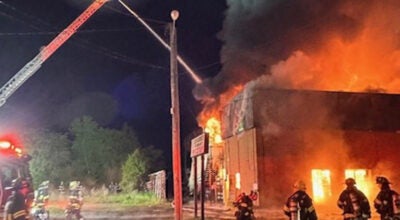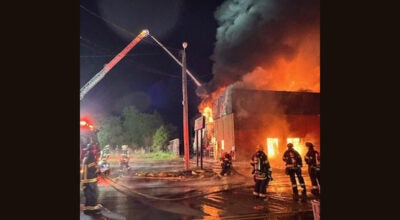City working through hazard pay proposal
Published 4:59 pm Tuesday, September 8, 2020
|
Getting your Trinity Audio player ready...
|
Several cities have authorized hazard pay to some of their employees, or have proposals on the table to do so, while Suffolk is currently developing a hazard pay policy.
The city has under consideration a plan to provide hazard pay for city employees who have been putting themselves most at risk for COVID-19.
“This is all new to us,” said City Manager Patrick Roberts. “We have, in our own compensation ordinances, premium pay for things like holidays and weather, but local governments are really grappling with this concept, which is new to this region.”
Roberts noted that localities were rolling this out in different and unique ways, and that the city is currently reviewing hazard pay plans.
City Director of Human Resources Robin Wynn, in outlining the possibility of near-term hazard pay, said the city is looking at it through “a very narrow lens.”
Wynn, in a presentation during council’s Sept. 2 work session, said retailers, primarily, first created pay incentives at the start of the coronavirus pandemic to provide incentives for people to come to work in potentially dangerous conditions.
CARES Act funding, Wynn said, has provided an expectation for localities to adopt similar policies with extra pay for such workers. The federal Office of Personnel Management’s definition states “that hazard pay means additional pay for performing hazardous duty or work involving physical hardship in each case that is devoted to COVID-19,” Wynn said.
However, it also said it could be used to meet payroll expenses for certain classes of workers — public safety, public health, heath care, human services and similar employees — who are dealing most directly with handling or responding to COVID-19.
Wynn said the narrow scope and definition of hazard pay has created challenges for localities, including not having a state or regional standard.
“In implementing the hazard pay program, it has created additional questions as well as additional considerations that may not have been evident at the time of drafting,” Wynn said. “The city of Suffolk is very cognizant of the challenges hazard pay can bring as evidenced by what Virginia Beach has experienced,” Wynn said.
Across the region, Portsmouth, Hampton and Norfolk have already put hazard pay plans into place, having given hazard pay to their employees mostly in the form of a bonus ranging from $250 to $2,000, Wynn said, while Virginia Beach and Chesapeake have proposals on the table that have not been finalized. Suffolk, Newport News and Isle of Wight County are in the middle of developing hazard pay policies.
“We’re taking a very cautious approach to how we do this,” Wynn said, “because clearly we want to do what’s in the best interest of the city of Suffolk employees.”
Roberts has asked the city’s Finance and Human Resources departments to develop a hazard pay definition while also determining eligibility criteria and a funding strategy.
City staff has created a two-part definition for a hazard duty employee — the first part defines the work performed by the employee and the second makes clear to division directors on what categories of employees would not be considered for hazard pay.
Wynn said she was told by a director in another locality that the city needs to look at the specifics of what a person does on a daily basis, not just the job title. The city’s recommendation provides specific detail “around frequency as well as the proximity to potential risk on a regular basis.”
Employees who would not be considered for hazard pay would be those whose responsibilities could be done remotely or could isolate themselves from the public or other employees due to the nature of their workspace or assigned tasks, or those who were on administrative leave, emergency family and medical leave between March 13 and Oct. 30, or employees that were furloughed.
The city’s Human Resources department is working with other department leaders to determine employee eligibility, while making additional efforts to mitigate COVID-19 hazards.
“The definition we gave, and what we’ve sent out to department heads, it really addresses the folks who are working with people either in large groups face-to-face every day,” Roberts said, “or they’re working face-to-face with the community and interacting with people in a way that they could be exposed to the virus. And some of those are public safety people, and some of those are public works and utilities, and we really have tasked the department heads right now with defining who are those divisions or staff in your department that meet that definition.”
Wynn said the Finance and Human Resources departments are working to finalize any proposal for using CARES Act money. Roberts would then notify council of any remaining actions needed prior to implementing hazard pay.
Besides hazard pay, Wynn said there has been a lot of conversation in other localities about deferring 2020 pay adjustments, with some discussing mid-year or future year cost of living adjustments based on needs. The city is not recommending a cost of living adjustment at this time, she said, noting other milestones that must be met first.
“It is our hope to come back before you soon to have that type of discussion,” Wynn said.
She said she also wants to look at a compensation strategy to increase retention and reduce compression.
Roberts said the federal definition is giving cities the most challenges, in particular understanding what the intent of Congress was with the legislation.
“This has to be done with a combination of federal money and local money,” Roberts said, “to apply this with any level of fairness.”
Those who have dealt with public safety workers first at the expense of other workers who are facing COVID-19 hazards and risks, Roberts said, “causes not only perception of unfairness but a real morale issue.”
Roberts said anyone who would receive hazard pay would receive it for work done during the pandemic from March through the end of the year. He said the goal is that for those receiving it, they would see the money in their paycheck sometime in October.
He wants a proposal by next month that would combine federal CARES Act money with one-time city money from the end of the previous fiscal year so that “we could apply this definition to a range of city employees who are out in the field working in clearly hazardous conditions, regardless of this federal definition and create some short-term additional pay for those folks” without having to create a recurring local funding source that has not been contemplated.
“That’s the challenge, and that’s what we’re trying to finalize,” Roberts said. “Otherwise, if I were to apply this quite literally out of the federal language, I just think it would be unfair and I couldn’t support it.”
Councilman Roger Fawcett said defining essential personnel in city government is a broad term because there is everything from public safety workers responding to calls to behind-the-scenes workers providing city services.
“The challenge is going to be how are you going to define, really, who those people are,” Fawcett said, “because, certainly, some people may feel left out in the process, and we’ll have to stress why, to a point, why we selected the way it was done so that they understand it.”






